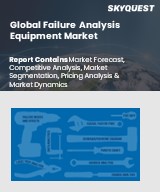
Report ID: SQMIG45A2279

Report ID:
SQMIG45A2279 |
Region:
Global |
Published Date: April, 2024
Pages:
197
|
Tables:
67 |
Figures:
72
Drivers
Rise in the Emergence of New Technologies
Growing Demand from Emerging Economies may Create Greater Business Opportunities
Restraints
Increased Cost of Ownership and Maintenance
Lack of Skilled Labour
Our industry expert will work with you to provide you with customized data in a short amount of time.
REQUEST FREE CUSTOMIZATIONWant to customize this report? This report can be personalized according to your needs. Our analysts and industry experts will work directly with you to understand your requirements and provide you with customized data in a short amount of time. We offer $1000 worth of FREE customization at the time of purchase.

Report ID: SQMIG45A2279